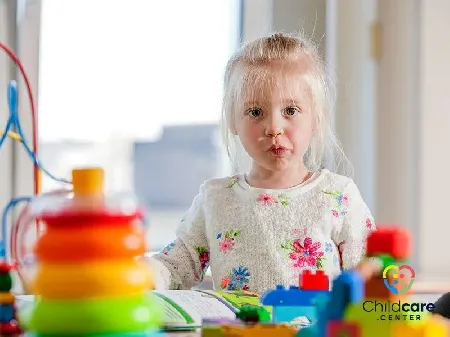Allergies in Children: What Every Childcare Provider Should Know Inside Out!
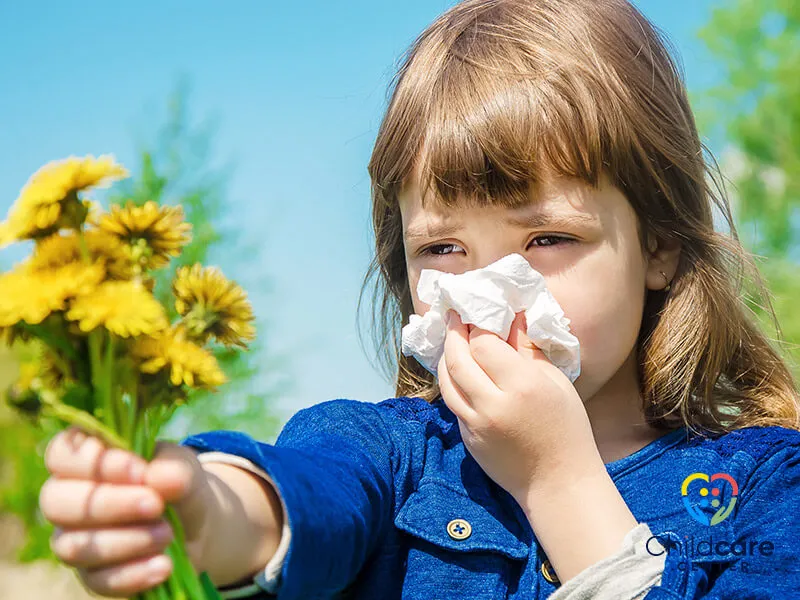
In today's dynamic childcare environment, understanding allergies in children is more than just a prerequisite—it's an imperative. With children's immune systems still developing and their exposure to various allergens increasing, childcare providers find themselves at the forefront of recognizing, managing, and preventing allergic reactions. These reactions can range from mild skin irritations to severe, life-threatening anaphylactic shocks. As caregivers, educators, and guardians of children's well-being during crucial hours of the day, providers must be equipped with comprehensive knowledge about allergies, their triggers, and the best preventive measures.
Moreover, the landscape of allergies has evolved over the years. With more children being diagnosed with various allergies, it's not just about avoiding the obvious triggers. It's about understanding the subtle signs, being proactive in creating an allergen-free environment, and fostering open communication with parents and guardians. As the title suggests, diving deep into the world of allergies in children is essential for every childcare provider to ensure the safety, health, and happiness of every child under their care.
Understanding Allergies in Children
Navigating the intricate world of allergies in children is a journey every childcare provider must embark upon. As children interact with their environment, they're exposed to a myriad of potential allergens, each with its own set of challenges. For a childcare provider, understanding these challenges is not just about identifying common allergens but about comprehending the broader implications on a child's health, well-being, and daily life. It's a realm where knowledge truly empowers, enabling providers to create safe spaces, foster understanding, and ensure that every child's unique needs are met.
The depth and breadth of allergies in children are vast. From food allergies that dictate dietary choices to environmental allergies that influence daily activities, the impact is profound. As childcare providers, delving deep into this subject ensures that children are not only safe but also thrive in an inclusive and understanding environment. For more detailed information on children's allergies specific to Canada, visit the Canadian Society of Allergy and Clinical Immunology.
The Importance of Awareness for Childcare Providers
Awareness is the cornerstone of effective allergy management in childcare settings. For providers, it's not just about recognizing the symptoms of allergies in children but about proactively creating environments that minimize risks. This involves staying updated with the latest research, understanding emerging allergens, and fostering a culture of open communication with parents and guardians.

The ripple effect of awareness is profound. An informed childcare provider can make nuanced decisions, from meal planning to activity organization, ensuring that children with allergies are not sidelined but are actively included in all aspects of daily life. This proactive approach not only safeguards children's health but also promotes inclusivity and understanding.
In this context, for childcare providers in Canada seeking to connect with a network of peers, or for parents looking for reputable childcare centers, Childcare Center offers a comprehensive directory to assist in finding the right environment for every child's needs. This platform can be an invaluable resource in fostering the necessary awareness and communication between providers and parents.
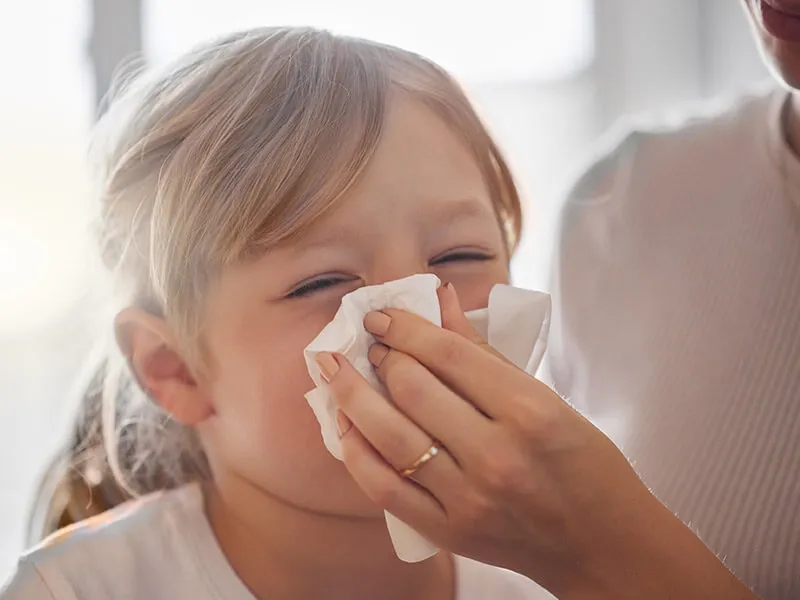
Mild to Severe: The Spectrum of Allergic Reactions
Allergies in children present in myriad ways, and understanding this spectrum is crucial for childcare providers. Some children might exhibit mild symptoms like a runny nose or a slight rash, while others might experience severe reactions like difficulty breathing or anaphylaxis. Recognizing the signs and understanding the gradations of reactions is paramount.
For a childcare provider, this knowledge dictates action. It's about knowing when a mild symptom requires monitoring and when it necessitates immediate medical intervention. It's about having action plans tailored to the severity of the reaction, ensuring that every child, irrespective of the intensity of their allergic reaction, receives timely and appropriate care. This nuanced understanding not only ensures safety but also fosters trust with parents, knowing their child's health is in capable hands.
Decoding Food Allergies
The world of food is a delightful exploration for children, but it also harbors potential allergens that can trigger allergies in children. As childcare providers, understanding these food-based allergens is paramount to ensure that every mealtime is both a joyous and safe experience.
- The Peanut Peril: More Than Just a Nut Allergy
Peanuts, a common snack and ingredient, pose a significant challenge when it comes to allergies in children. Their widespread use in various dishes makes them a frequent culprit, and for some children, even trace amounts can trigger severe reactions. It's not just about avoiding peanut butter or peanut-based snacks; it's about understanding the potential for cross-contamination and being vigilant.

Childcare providers must be proactive in this regard. This involves meticulous label reading, ensuring peanut-free zones, and fostering open communication with parents about potential risks. By staying informed and taking preventive measures, providers can ensure a safe environment where children can enjoy their meals without the lurking peril of peanut allergies.
In addition to being mindful of allergens, it's also important to provide nutritious meals. For inspiration, explore our Healthy Breakfast Ideas for Kids , which offer a variety of options suitable for different dietary needs.
- Milk, Eggs, and Wheat: Common Culprits in Children's Diets
While milk, eggs, and wheat form the cornerstone of many traditional diets, they also rank among the top allergens causing allergies in children. These staples, present in a plethora of dishes, can be challenging to navigate for children with allergies. Recognizing this, childcare providers must be adept at identifying and offering suitable alternatives.
It's essential to differentiate between intolerance and allergies. For instance, lactose intolerance is different from a milk allergy, and understanding these nuances can guide informed meal planning. By staying updated on the latest research, engaging in continuous dialogue with parents, and ensuring clear labeling of foods, childcare providers can create a menu that caters to the diverse needs of all children.

- The Hidden Dangers of Soy and Tree Nuts
Soy and tree nuts, while perhaps less notorious than peanuts, are potent allergens that can cause significant allergies in children. Often found in processed foods or as integral components of various dishes, their potential to trigger allergic reactions is substantial. For childcare providers, this means being astute about the hidden presence of these allergens and ensuring their exclusion where necessary.
The challenge with soy and tree nuts lies in their pervasive presence. From sauces to baked goods, they can be found in a variety of unexpected places. Armed with knowledge and a keen eye for detail, childcare providers can navigate this challenge, ensuring that children's dietary needs are met without compromising their safety.
Navigating Environmental Allergies
The environment, both indoors and out, is rife with triggers for allergies in children. Childcare providers must be adept at recognizing and managing these environmental allergens to ensure a safe and comfortable setting for every child.
Pollen: The Seasonal Sneak Attack
The beauty of spring and summer often comes with an unseen challenge: pollen. For many children, these seasons signal the onset of uncomfortable allergic reactions. Pollen, released by blooming plants, can be a significant irritant, causing symptoms ranging from sneezing to more severe respiratory issues. For childcare providers, understanding the nuances of pollen-induced allergies in children is crucial.
Being proactive during peak pollen seasons can make all the difference. This might mean adjusting outdoor playtimes, ensuring indoor spaces are well-ventilated, or even educating children about the importance of washing hands and faces after outdoor activities. With the right strategies, the joys of spring and summer can be embraced without the sneezes. Additionally, engaging children in safe and enjoyable Nature Activities for Kids can be a great way to explore the outdoors while being mindful of potential allergens.
Dust Mites and Mold: The Indoor Allergy Triggers
While outdoor allergens are often discussed, indoor triggers like dust mites and mold can be equally challenging. These allergens, often hidden from view, can cause a range of allergies in children, from skin irritations to respiratory issues. Recognizing and addressing these indoor allergens is a responsibility every childcare provider must shoulder.
Combatting these allergens requires a multi-faceted approach. Regular cleaning, using hypoallergenic materials, and ensuring spaces are dry and well-ventilated can significantly reduce the presence of dust mites and mold. By creating a clean and allergen-reduced environment, childcare providers can ensure the safety and comfort of every child in their care.
Pets and Insects: Unexpected Allergy Sources
Pets bring joy and teach compassion, while insects spark curiosity. However, both can be sources of allergies in children. Whether it's the dander from a beloved pet or a sting from an insect, unexpected allergic reactions can occur, and providers must be prepared. For pets, it's about understanding the potential allergens they might carry and ensuring children are not overly exposed.
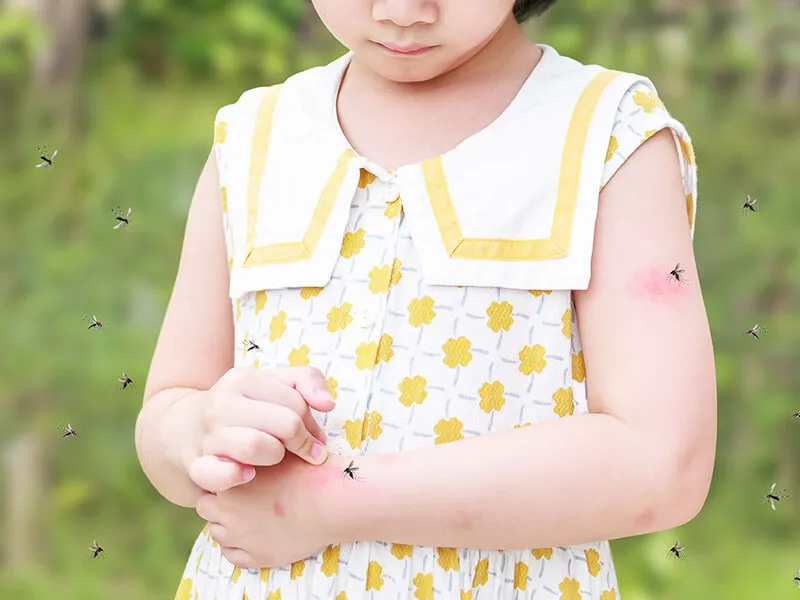
Regular grooming of pets and maintaining clean play areas can help. When it comes to insects, preventive measures like using safe repellents and educating children about safe behavior outdoors can be effective. In both cases, being proactive and informed ensures that children can explore and play without the shadow of allergies looming large.
Emergency Protocols for Allergic Reactions
In the realm of allergies in children, preparedness is paramount. While prevention is always the first line of defense, being equipped to handle emergencies when they arise is equally crucial. Allergic reactions can escalate rapidly, and in such moments, every second counts. For childcare providers, understanding and implementing emergency protocols can make the difference between a manageable situation and a life-threatening one.
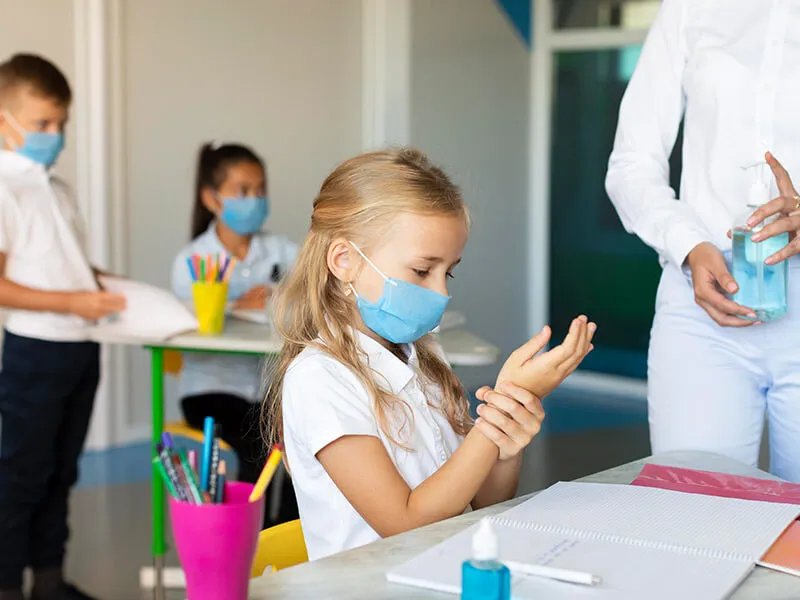
Recognizing and Responding to Severe Symptoms
The spectrum of allergies in children can manifest in various ways, from mild irritations to severe anaphylactic reactions. Recognizing the signs of a severe allergic reaction is the first crucial step. Symptoms can include difficulty breathing, swelling of the face and throat, rapid or weak pulse, and a significant drop in blood pressure.
For childcare providers, timely response is essential. This means having a clear action plan, which could involve administering prescribed emergency medication like epinephrine, calling emergency services immediately, and notifying parents or guardians. Training and regular drills can ensure that every staff member knows their role in such emergencies, ensuring swift and effective action to safeguard the child's well-being. For more detailed guidance on handling severe allergic reactions, Health Canada provides valuable information on Severe Allergic Reactions.

The Role of First Aid in Allergic Emergencies
First aid plays a pivotal role in managing allergies in children, especially during emergencies. While waiting for professional medical assistance, the right first aid measures can stabilize a child and prevent the situation from worsening. This might involve placing the child in a comfortable position, monitoring their vital signs, or even performing CPR if necessary.
Childcare providers should be equipped with a well-stocked first aid kit, tailored to address allergic reactions. Regular training sessions on first aid for allergic reactions can empower providers with the skills and confidence to act decisively. By understanding the role of first aid and its application, providers can bridge the crucial gap between the onset of a severe allergic reaction and the arrival of medical professionals.
Prevention and Communication Strategies
When it comes to managing allergies in children, prevention is always better than cure. In childcare settings, this philosophy becomes even more critical. By implementing robust prevention and communication strategies, childcare providers can significantly reduce the risk of allergic reactions and ensure a safe environment for every child. Effective communication with parents, guardians, and staff members, combined with proactive preventive measures, forms the bedrock of allergy management in childcare settings.
- Keeping an Updated Allergy List: A Must-Have
An updated allergy list is an invaluable tool in the fight against allergies in children. This comprehensive list should detail each child's specific allergies, the severity of reactions, and any prescribed medications or interventions. It serves as a quick reference for staff members, ensuring that they are always aware of potential allergens and the necessary precautions.

For childcare providers, regularly updating and reviewing this list is essential. Regular communication with parents and guardians ensures that any changes in a child's allergic profile are promptly noted. By maintaining an accurate and up-to-date allergy list, providers can make informed decisions, ensuring the safety and well-being of every child in their care.
- Training and Awareness: The First Line of Defense
Knowledge is power, especially when it comes to managing allergies in children. Regular training sessions for staff members can equip them with the knowledge and skills to recognize and respond to allergic reactions. These sessions should cover the spectrum of allergies, from food to environmental triggers, and provide actionable strategies for prevention and intervention.
Beyond formal training, fostering a culture of awareness is crucial. This means encouraging staff members to stay updated with the latest research, share insights, and engage in continuous learning. By prioritizing training and awareness, childcare providers can ensure that they are always prepared to handle any allergy-related challenges that arise.
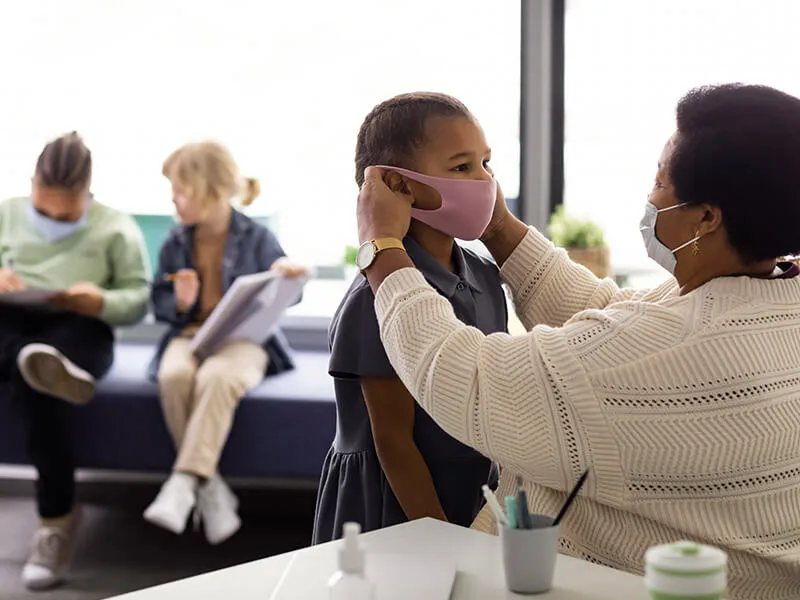
- Building a Safe Environment for Every Child
Creating a safe environment goes beyond just eliminating known allergens. It's about building a holistic space where every child, irrespective of their allergic profile, can thrive. This involves meticulous planning, from meal preparations to activity organization, ensuring that allergies in children are always taken into account.
Collaborative efforts with parents, guardians, and even the children themselves can provide valuable insights into creating this safe environment. By understanding each child's unique needs and preferences, providers can tailor their strategies, ensuring that every child feels safe, included, and valued. Through proactive measures and open communication, childcare providers can build an environment where children are shielded from allergens and empowered to explore, learn, and grow.
Conclusion
Navigating the complex landscape of allergies in children is a paramount responsibility for childcare providers. As the prevalence of allergies continues to rise, understanding their triggers, symptoms, and management strategies becomes even more crucial. By staying informed, fostering open communication, and implementing preventive measures, providers can create a safe and nurturing environment for every child. It's not just about avoiding allergens; it's about empowering children to thrive despite them. With the right knowledge and tools, childcare providers can ensure that every child, irrespective of their allergic profile, experiences a childhood filled with exploration, learning, and joy, free from the constraints of allergies.




